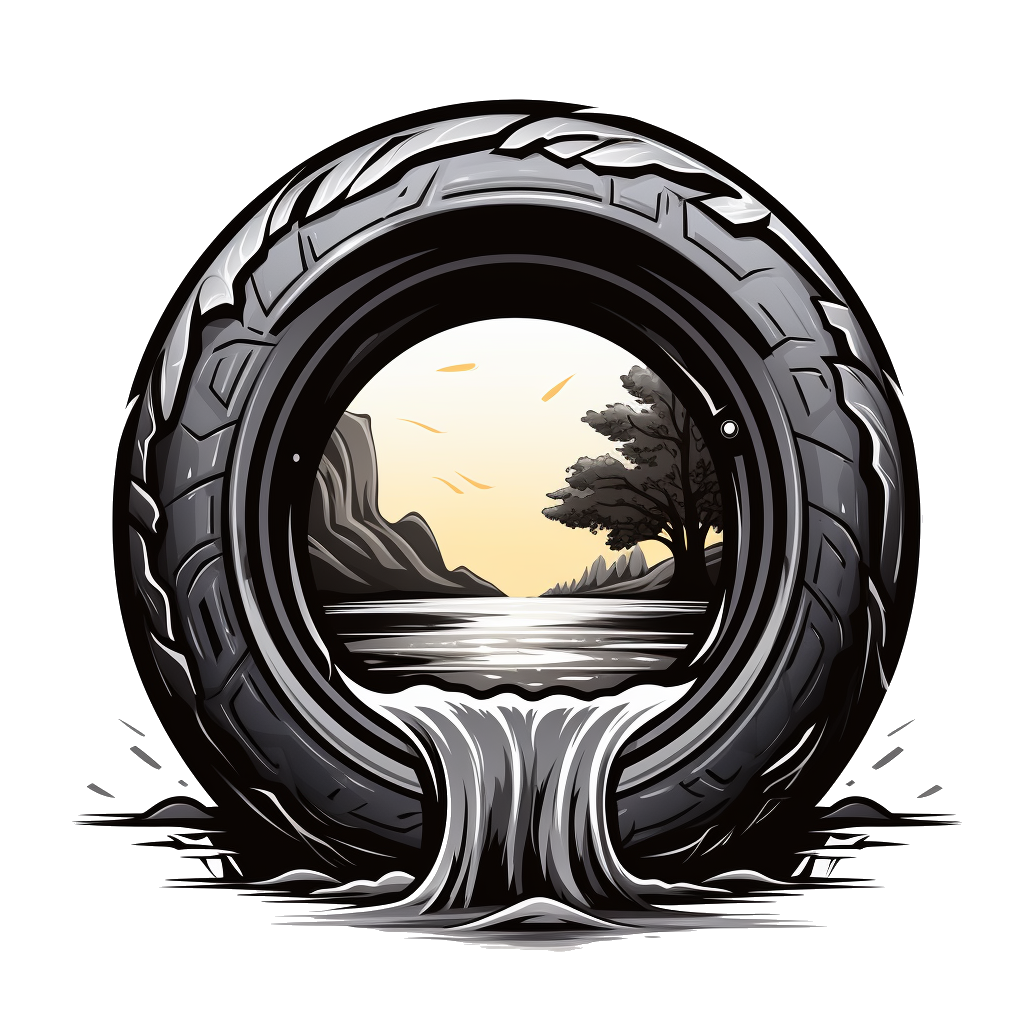The Problem
Driving on roads causes tire wear, releasing small particles into the environment. When it rains or snows, stormwater runoff carries these tire wear particles and other pollutants into nearby bodies of water. The chemicals used in rubber tires, like 6PPD, which is a common antioxidant, can be toxic to aquatic organisms. When exposed to the environment, 6PPD transforms into 6PPD-Quinone, which is highly toxic to certain aquatic species, including coho salmon, causing acute mortality.
Urban areas with urban runoff are the primary locations where tire wear particles and 6PPD-Q pollution are most concentrated. This pollution poses a significant threat to coho salmon, leading to a phenomenon known as “urban runoff mortality syndrome” (URMS). Coho salmon that return to spawn in urban watersheds experience alarmingly high mortality rates due to this syndrome.
Due to the characteristics of the chemical, there is a suspicion that bioaccumulation and biomagnification of 6PPD-Q take place in aquatic organisms.
The research around TWP, 6PPD, and 6PPD-Q is a relatively new field of study, and there is still much to learn about these pollutants and their distribution in and effect on aquatic ecosystems. Because of this, it is very important that we keep broadening our understanding of these contaminants in order to protect aquatic ecosystems and human health.

Our Focus
Main goals for project:
Our project aligns with 2 of the Columbia River Basin Restoration Project priorities:
The project also aligns with EPA’s Strategic Plan to “Provide for Clean and Safe Water.”
Distribution
In total, the Columbia River Basin encompasses over 258,000 square miles and is home to dozens of keystone species. This project focuses on sub-basins of the Middle and Upper Columbia River, which serve as critical spawning grounds for salmon and steelhead. In addition to spawning grounds, these sub-basins are year-round habitats for trout, bivalves, eels, crayfish, and other aquatic species. Furthermore, Indigenous Peoples have inhabited these regions since time immemorial and have relied heavily on the food and medicine provided by clean waters. European settlement in the Columbia River Basin created pressure on these ecosystems, pushing aquatic species toward the brink of extinction. In addition to urban development and road infrastructure, practices like overharvesting, over-dependence on hatcheries, and the construction of dams throughout the Basin have significantly impacted aquatic ecosystems.
Major thoroughfares like I-90, I-84, and highway 95 run parallel to critical riverine systems of the Columbia and traverse several watersheds throughout the Middle and Upper Basins. For example, I-90 travels along and through the Clark Fork, Pend Oreille, and Spokane River watersheds. Similarly, I-84 and highway 95 traverse through the Middle and Upper Snake River watersheds.
Because our study area is so vast, we have the opportunity to explore tire wear particle emissions in watersheds that are characterized by everything from low elevation shrub lands to high elevation mountainous regions. We will also be able to compare differences between this pollution found in rivers and lakes, which may be important for answering questions about fate and transport. In addition to diverse topographic features and climates, our sampling sites will represent mixed land-uses to include urban, agricultural, and remote forested regions.
Our sampling approach is intended to illustrate a better picture of how tire wear particles and 6PPD-Q are distributed throughout the Middle and Upper Columbia River Basin.
Monitoring
Crayfish are commonly used in research as bioindicators due to their sensitivity to changes in their environment. We have hypothesized that they work well as a tool for detecting TWP and 6PPD-Q and help to determine the distribution of these pollutants in aquatic environments by monitoring these environments over time.
In the initial phase of our project, we aim to assess whether crayfish can effectively detect TWP and 6PPD-Q in the environment. This involves examining whether crayfish accumulate these pollutants in their tissues and organs.
Once we establish that crayfish can indeed bioaccumulate TWP and 6PPD-Q, the subsequent stage of our research involves utilizing these crayfish to assess the distribution of these contaminants within the Columbia River Basin (CRB).
Remediation
Stormwater runoff enables the transportation of 6PPD and 6PPD-q from roads to rivers. Due to 6PPD-q’s deadly nature, water and sediment remediation is drastically needed in stormwater streams, collection areas, and contaminated waterbodies. Plants are a common and effective tool for remediation of polluted areas. Willow trees are a great candidate for in-situ phytoremediation of organic chemicals because of their pollution resilience, high evapotranspiration rate, and widespread roots. They additionally provide habitat and food resources for many different species like beavers, salmon, and moose.
We are researching if and how different species of willows uptake, translocate, or transform 6PPD and 6PPD-q. This experiment entails testing water, soil, roots, stems, and leaves to determine uptake capabilities. If 6PPD and 6PPD-q are syphoned from the environment and transformed by willows, new remediation techniques can be developed, shared, and implemented. These best management practices can enable improved ecosystems and better salmon survival.
